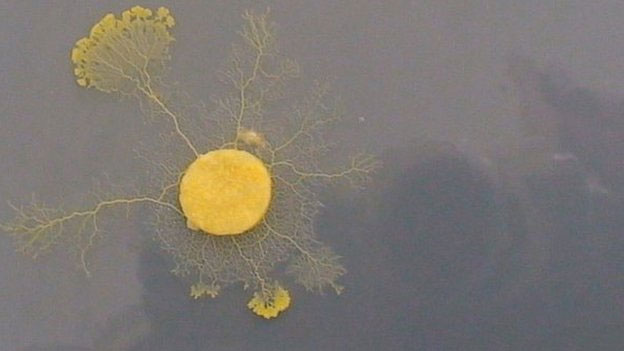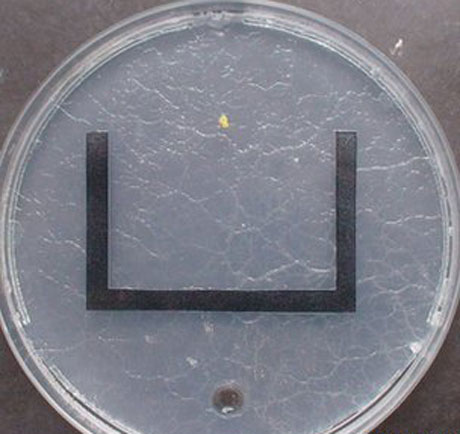Strange memory of slime mold
Mucilis, a protozoan, although it has no brain or nervous system but can move very smartly thanks to special memory.
Scientists at the University of Sydney in Australia tested the mobility of a slime mold called Physarum polycephalum. They put this slime mold on the face of a plate with agar glue, a glue commonly used to culture bacteria. On the other side of the plate, they put a bit of sugary food to attract the slime mold and then put a U-shaped trap between the slime mold and that food source to observe its path.

A slime of Physarum polycephalum. (Photo: BBC)
Researcher Dr. Christopher Reid, who led the study, said: 'Mucus is not a fungus or mold. It is a protozoan and is not part of our biological classification system. They exist around us everywhere on earth and eat yeast, bacteria, fungi '.
'The body of the slime mold creates continuous chains of stretches to move. It uses a mechanism similar to human muscle cells. Each part of its body changes the perceived stretching rate of the surrounding environment (food, light or temperature) thanks to chemical receptors on the cell surface. The stretching of each part of the slime mold also affects other body parts. That means these parts can communicate to each other about developments outside the environment. The different rate of contraction of the body parts will directly influence the movement of the slime mold , 'Reid describes.

Mucilis mushroom moves in a maze
U-shaped to the position of the food. (Photo: BBC)
The researchers even compared the intelligent mobility of the slime mold with the way of remembering sugar by using bread crumbs from Hansel and Gretel in a famous German fairy tale. People use the names of these two characters to call a method of remembering the way in scientific research. They found, when the slime mold moved on the plate, they left behind the sebum stains and they did not move into those greases.
According to scientists, greasy spots play an important role in the study of slime mold by how they mark the path like the bread crumb method of Hansel and Gretel.
- Recommended 'ghost slime' that many students love
- The risk of skin infection when using 'spooky toys' Slime
- Mold (Aspergillus) - Doctor of fermentation
- Computer made from slime mold
- Surprisingly, the ability to 'copy the original' of the slime mold
- Discover strange 2012: World's smallest frog
- Fossilized pig mold in amber 30 million years
- Slime on frog skin is capable of treating flu
- Chopsticks mold: Assassin causes cancer
- Is it dangerous to eat moldy bread?
- Is mold food safe?
- Robotics creatures made from unicellular animals
 Why do potatoes have eyes?
Why do potatoes have eyes? 'Tragedy' the world's largest carnivorous life: Death becomes ... public toilet
'Tragedy' the world's largest carnivorous life: Death becomes ... public toilet Tomatoes were once considered 'poisonous' for 200 years
Tomatoes were once considered 'poisonous' for 200 years Detecting microscopic parasites on human face
Detecting microscopic parasites on human face